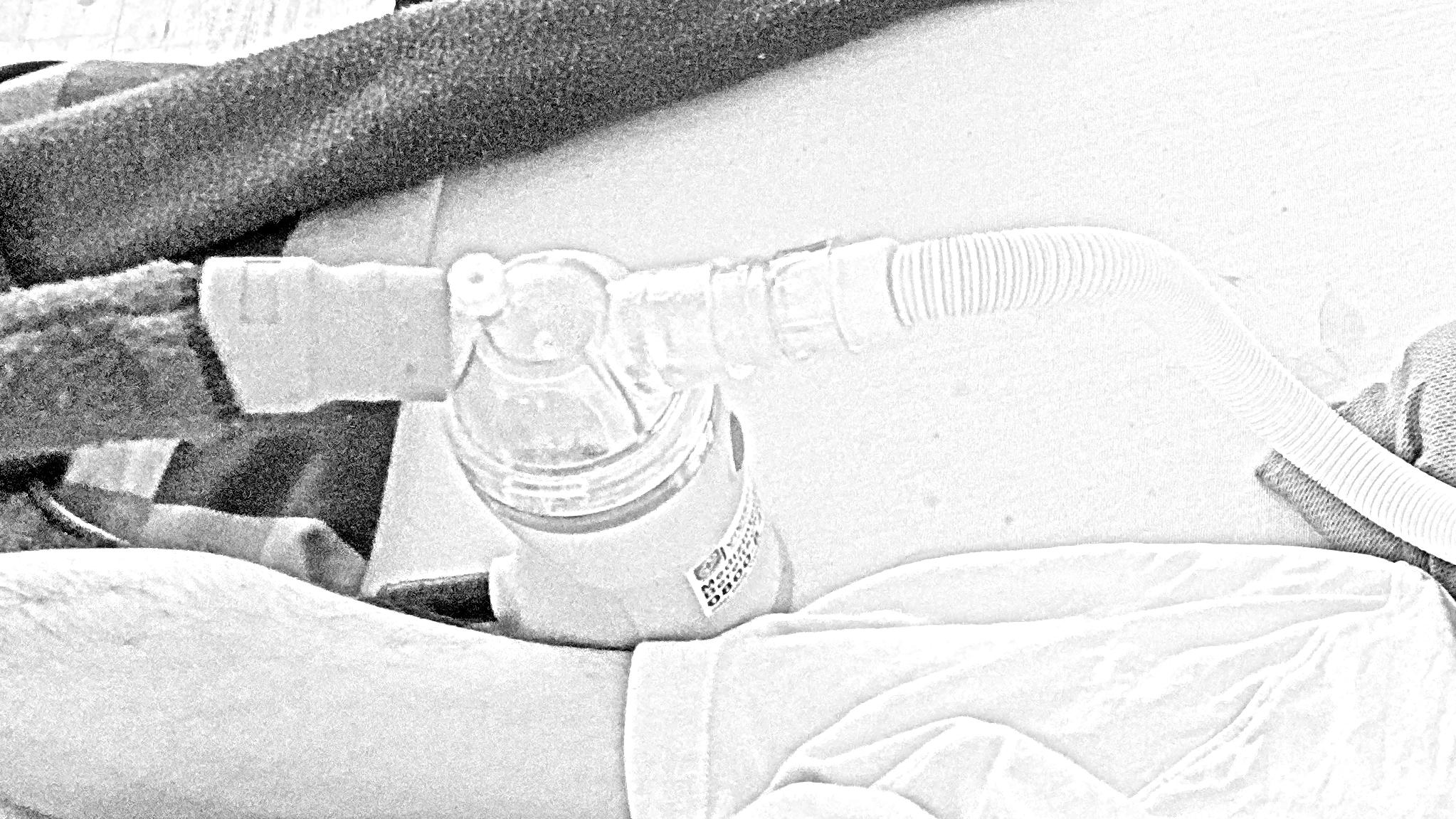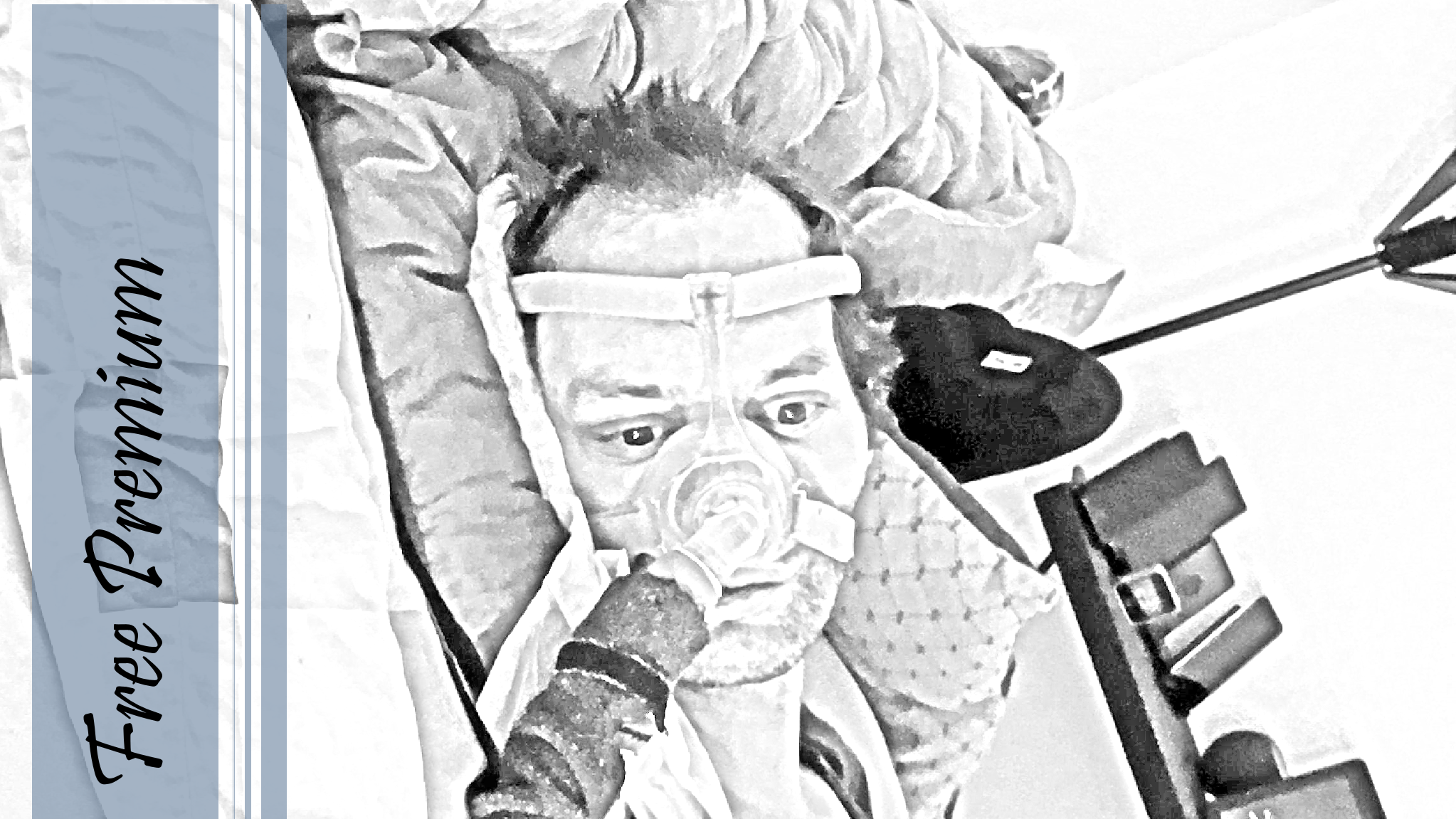To inhale me in the morning, it's best to prepare everything first, because inhalation is really uncomfortable and oppressive for me. So get the suction catheter ready, fill the Multisonic, get the mask ready to change, if you were planning to clean the nasal mask (which I put on after inhalation), then do that now.
With everything I say here, I really don't want to explain my job to anyone. Please understand that I am only passing on my own experiences from several years of very intensive examination of my own body. And this under the influence of one of the most deviant and at the same time individually differently manifesting illnesses I know. I speak only for myself, but as far as I am concerned, you can forget any textbook. But now back to the actual topic. The morning inhalation:
So, once again we have reached a point where I could throw away my own documentation - because it is out of date. I prepared it on paper for my carers, and when I finally arrived at the web version, it's all different again. Welcome to the world of an ALS patient.
Of course, inhaling is still done here. Even more regularly than ever. Three to four times a day, followed by the use of the cough machine, wiping the nose and suctioning through the mouth and nose.
But we no longer change the mask, instead we adapt the nasal mask to the Multisonic using a goose gurgle. Too often the mask change did not work properly. After various other "incidents", I practically always got anxiety near panic when the mask was pulled too tight during inhalation. The goose gurgle variant saves both my carers and myself a lot of unnecessary stress.
And yes, of course I am aware that neither multisonic nor goose gurgles are intended to be used in this way. But it is the way it is. If I can't assume that all nurses know how to put on the full-face mask correctly, then I have to resort to unconventional methods.
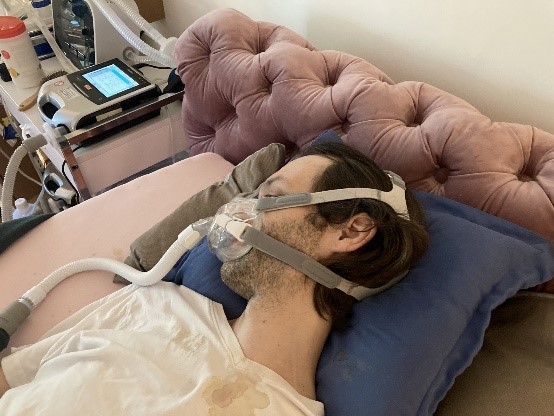
First you put me completely on my back and turn my head completely to the right side. This is the position in which I can breathe quite well.
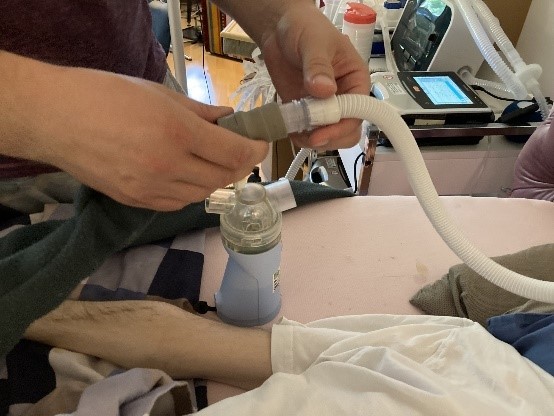
As soon as I signal my readiness with my eyes, you disconnect the grey tube from the ventilation and the clear-coloured end piece of the white tube connector of the nose-mouth mask.

Now comes the part that some people don't want to understand. There is overpressure on the ventilation, which of course also blows the inhalation solution out of the Multisonic immediately if the second side is still open during connection to ventilation.
So first connect the white hose from the mask.
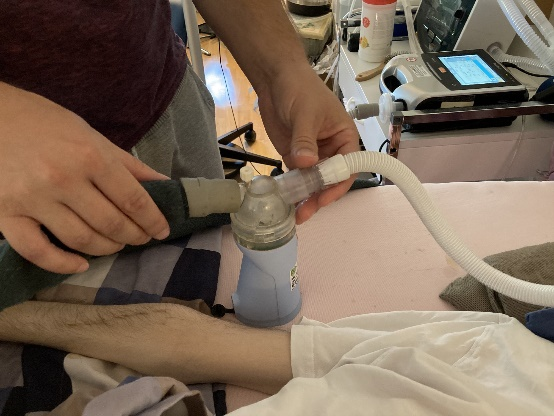
When the white tube is in place, connect the grey one from the ventilation. In this order, my bed stays dry and my lungs get something to inhale. ?

Then we still need electricity. The line hangs to the right of the active ventilator.
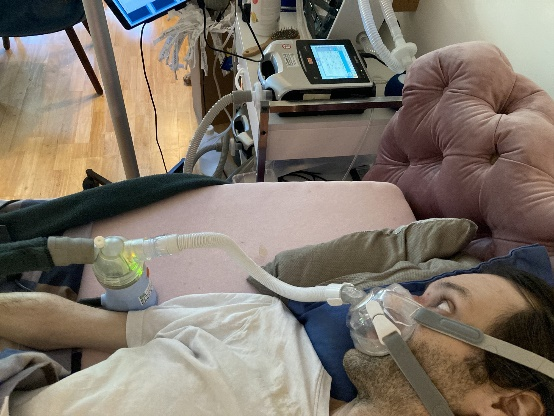
Now you can clamp the Multisonic and start the inhalation. My favourite thing is to see the orange LED so I know when the inhalation is ready.
But the safe stand is even more important. Every week the MultiSonic falls over once and the liquid inhalation solution hits me everywhere. This is only topped by the action when the MultiSonic fell off the bed, tore off the ventilation tube and the nurse was on the toilet...

Please put my computer back where I can use it to raise the alarm if necessary.
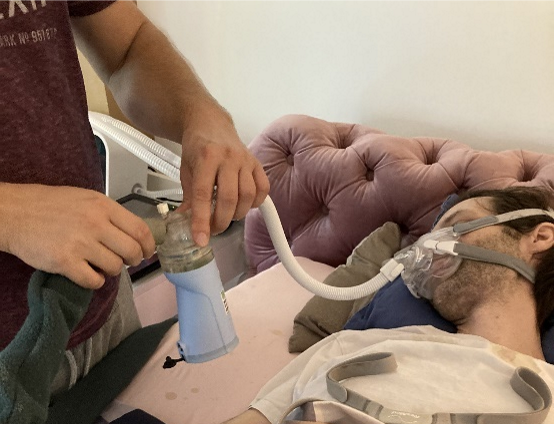
Disassembly works in principle in exactly the same way as reassembly - only in reverse. The power line can already be unplugged. Now you wait for my eye signal that I'm ready.

Then, in the first step, disconnect the grey tube of the ventilation from the MultiSonic.
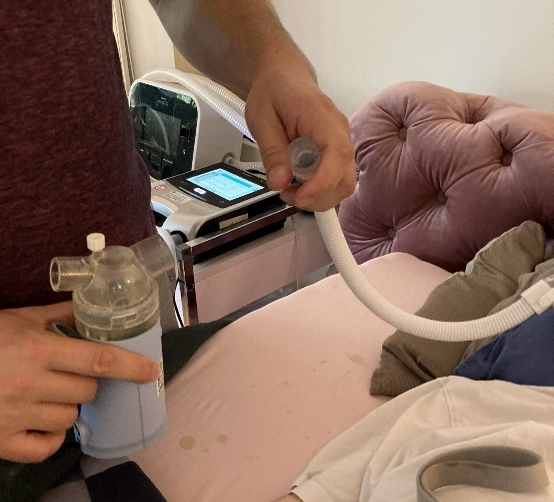
In the second step, pull the white hose connector off the MultiSonic.
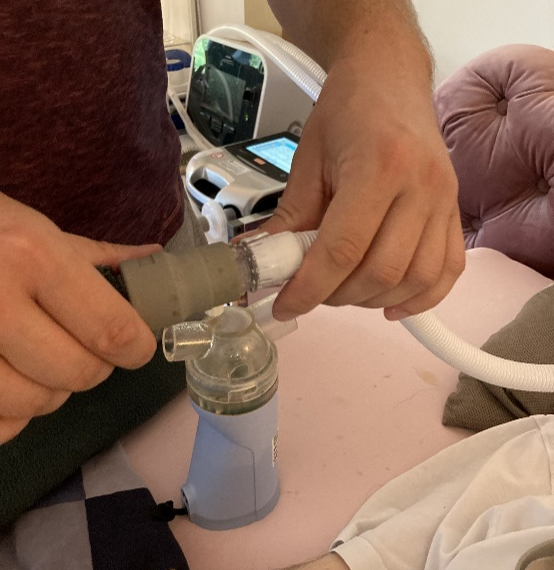
Now quickly connect the grey hose with the white hose connector of the nose and mouth mask and we are done. Almost!
Rinse the MultiSonic immediately under clean water after each use. NaCl is a salt and as soon as it dries it crystallises and clogs the ultrasonic nebuliser of the inhaler. I have already had to pay for five repairs because I almost always forget to clean the UltraSonic.
The fact that I get such trepidation and often shortness of breath (purely psychological, although measurable by pulse and saturation) when I inhale has only been the case since mid-July 2022. Even after twelve months with me, one of my nurses didn't understand how to put the mask on properly. To make it seal, he always opened the Velcro straps and tightened them until it was tight. And then it happened that he put me on my side for inhalation for reasons I couldn't explain, didn't listen to me, took away my eye control, forgot to pull my left arm and shoulder out from under my own ribcage when I was lying on my left side and then went to the toilet. When I tried to raise the alarm for breathing difficulties through the mask, I found that it was so tight that I could not raise the leak alarm. Since that incident I have been afraid just to see the nose and mouth mask. A pity.

